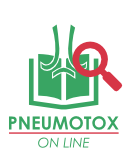VIII.a
Angioedema (may cause UAO, asphyxia and death)
See PMID 30075570. Review at PMID 28291095. Major risk is UAO, with consequent asphyxia. Can be followed by irreversible hypoxic brain damage/death. See also under VIIIg. May occur in isolation or accompany drug-induced anaphylaxis. Airway angioedema can be in the form of acute swelling of the lips, tongue, mouth floor, uvula, pharynx, larynx, glottis, subglottic area and/or upper trachea. This can cause acute upper airway obstruction (UAO) and asphyxia. May overlap with IVb. Expedient identification the airway by endoscopy and maintenance of airway patency are crucially important, as if the UAO progresses emergent risky tracheostomy can be required. Icatibant may alleviate all manifestations of drug-induced angioedema (PMID: 22936825). Rebound phenomenon can occur after an initial falsely reassuring period of improvement. NPPE (IIg) may occur as a secondary complication. Reviews and series at PMID 20447725, 20667117, 20922352, 22552531, 22936825, 22976464, 25059449. Angioedema can also involve the bowel wall in concomitance, causing abdominal pain or cramping or simulate an acute abdomen (PMID: 20376210, 21785085, 22867837)
Causative drugs
126

